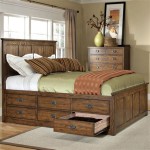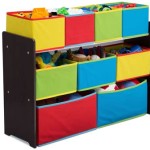Clever Yarn Storage Solutions For Your Homes
Yarn, the fundamental material for knitting, crocheting, and other fiber arts, can quickly accumulate into a significant collection. Without proper organization, a yarn stash can become a chaotic source of stress rather than a wellspring of creativity. Implementing effective yarn storage solutions is crucial for maintaining a tidy and inspiring crafting space. These solutions range from simple and budget-friendly to elaborate and custom-built, catering to diverse needs and preferences. The key is to assess the volume of yarn, available space, and desired level of accessibility to determine the most suitable method.
Effective yarn storage not only contributes to an organized home but also protects the yarn itself. Exposure to dust, sunlight, and pests can degrade the quality of fibers, leading to discoloration, weakening, or even infestation. Proper storage minimizes these risks, ensuring that the yarn remains in optimal condition for future projects. Furthermore, a well-organized yarn collection facilitates efficient project planning, allowing crafters to easily locate desired colors, textures, and weights.
Utilizing Vertical Space with Shelving and Hanging Organizers
One of the most effective strategies for yarn storage, especially in smaller spaces, is to leverage vertical space. Shelving units, both freestanding and wall-mounted, provide ample storage capacity and allow for visual organization. Open shelving enables crafters to quickly scan their yarn collection and select the required materials. Alternatively, shelves with doors or drawers can conceal the yarn, creating a cleaner and more minimalist aesthetic. The choice depends on personal preference and the overall design of the room.
When selecting shelving units, consider the weight-bearing capacity. Yarn, particularly in bulk quantities, can be surprisingly heavy. Opting for sturdy shelves made from solid wood or reinforced metal is essential to prevent sagging or collapse. The depth of the shelves should also be considered. Shallower shelves are ideal for smaller yarn skeins or balls, while deeper shelves can accommodate larger quantities or bulky yarns.
Hanging organizers offer another method for utilizing vertical space. These organizers can be hung on closet rods, doors, or walls, providing convenient storage for smaller yarn skeins or balls. Clear pockets or compartments allow for easy visibility of the yarn collection. Hanging organizers are particularly useful for organizing yarn by color, weight, or project.
Over-the-door shoe organizers can be repurposed as yarn storage solutions. Their individual pockets are perfectly sized for holding smaller yarn balls or accessories such as knitting needles and crochet hooks. These organizers are easy to install and move, making them a versatile option for renters or those who frequently rearrange their crafting space. Furthermore, the transparent pockets facilitate quick identification of yarn colors and types.
Creative Repurposing of Furniture and Containers
Existing furniture and containers can be creatively repurposed to provide yarn storage solutions. Items such as dressers, chests of drawers, and ottomans can be transformed into functional storage units with minimal effort. These pieces of furniture not only offer ample storage space but also blend seamlessly with the existing décor, maintaining the aesthetic appeal of the room.
Dressers and chests of drawers are particularly well-suited for storing large quantities of yarn. The individual drawers can be used to organize yarn by color, weight, or fiber type. To prevent yarn from tangling or becoming disorganized, consider using drawer dividers or small boxes within the drawers. Labeling each drawer with its contents will further enhance organization and facilitate easy retrieval of yarn.
Ottomans with hinged lids or removable tops provide hidden storage space for yarn. These versatile pieces of furniture serve a dual purpose, offering both seating and storage. The interior of the ottoman can be used to store larger yarn skeins, projects in progress, or other crafting supplies. Choosing an ottoman that complements the room's décor ensures that it seamlessly integrates into the space.
Various types of containers, such as baskets, bins, and totes, can be used to organize and store yarn. These containers can be placed on shelves, in closets, or under furniture, maximizing available space. Selecting containers of different sizes and shapes allows for customized storage solutions that cater to specific needs. Clear containers are particularly advantageous as they allow for easy identification of yarn colors and types without having to open the container.
Wicker baskets offer a natural and aesthetically pleasing storage solution. Their breathable material allows for adequate ventilation, preventing the buildup of moisture that can damage yarn. Baskets can be used to store yarn on shelves, in closets, or even on the floor, adding a touch of rustic charm to the room. However, it's crucial to ensure that the baskets are smooth and free of any snags that could catch on the yarn.
Implementing Specialized Yarn Storage Units
For serious yarn enthusiasts with extensive collections, specialized yarn storage units can provide the ultimate organization solution. These units are specifically designed to accommodate yarn in various forms, offering features such as individual compartments, adjustable shelves, and clear drawers. While they may require a larger investment, they offer unparalleled functionality and visual appeal.
Yarn cabinets are a popular choice for dedicated crafters. These cabinets feature multiple drawers or compartments, each designed to hold a specific quantity of yarn. The drawers are often made of clear plastic, allowing for easy visibility of the yarn collection. Some yarn cabinets also include adjustable shelves, providing flexibility in organizing yarn of different sizes and weights.
Yarn walls are a more elaborate storage solution that transforms an entire wall into a yarn display. These walls typically consist of a series of shelves or compartments, arranged in a visually appealing manner. Yarn walls not only provide ample storage space but also serve as a decorative element, showcasing the crafter's yarn collection. They are often custom-built to fit the specific dimensions of the room and the needs of the crafter.
Rolling carts offer a mobile storage solution for yarn and crafting supplies. These carts typically feature multiple shelves or drawers, allowing for easy organization of various items. Rolling carts are particularly useful for crafters who frequently move their projects from one room to another. They can also be used to transport yarn and supplies to workshops or crafting events.
Regardless of the chosen storage method, proper labeling is crucial for maintaining an organized yarn collection. Labels can be attached to shelves, drawers, containers, or individual yarn skeins, providing information such as yarn color, fiber content, weight, and dye lot. Consistent labeling ensures that yarn can be easily located and identified, saving time and effort in the long run.
The longevity of the yarn depends on proper care during storage. Protecting the yarn from pests and extreme temperatures is key to ensuring years of beautiful projects. Storing the yarn in airtight containers will help prevent moths and other insects from damaging the fibers. Placing lavender sachets or cedar chips within the storage area provides a natural insect repellent.
Yarn that is stored for a prolonged period should be rotated regularly. This prevents the yarn from becoming compacted or misshapen. Periodically taking the yarn out of its storage container and fluffing it will help maintain its original texture and appearance. It also provides an opportunity to inspect the yarn for any signs of damage or deterioration.
Organizing the yarn by color can be both aesthetically pleasing and practically efficient. Arranging the yarn in a rainbow order or by color family allows for easy visual access and facilitates project planning. It also creates a visually appealing display that can inspire creativity.
Categorizing the yarn by weight is another useful organizational strategy. Separating yarn by weight, such as fingering, DK, worsted, and bulky, simplifies the process of selecting the appropriate yarn for a particular project. It also prevents the accidental use of yarn that is too thin or too thick for the intended pattern.
Sorting the yarn by fiber content, such as wool, cotton, acrylic, or silk, is beneficial for crafters who have specific preferences or requirements. Certain projects may call for specific fiber types, and organizing the yarn accordingly simplifies the selection process. It also allows for easy comparison of different fiber types and their properties.

20 Best Yarn Storage Ideas How To Safely Crochetpedia

How To Yarn Ideas Organize Your Stash Mistakes Avoid

20 Best Yarn Storage Ideas How To Safely Crochetpedia
:max_bytes(150000):strip_icc()/diy-yarn-storage-idea-wooden-crates-3-5bb016d0c9e77c00260a80f2.jpg?strip=all)
13 Clever Yarn Storage Ideas

20 Best Yarn Storage Ideas How To Safely Crochetpedia
:max_bytes(150000):strip_icc()/794611859_qr9YG-712x712-5bb010c1c9e77c00266e627a.jpg?strip=all)
13 Clever Yarn Storage Ideas

My Yarn Room Makeover How To Organize Mama In A Stitch

20 Best Yarn Storage Ideas How To Safely Crochetpedia
:max_bytes(150000):strip_icc()/4500840717_b9384d9bda_o-5bb0dd4c46e0fb0026cb8cd5.jpg?strip=all)
13 Clever Yarn Storage Ideas

How To Yarn Ideas Organize Your Stash Mistakes Avoid
Related Posts








